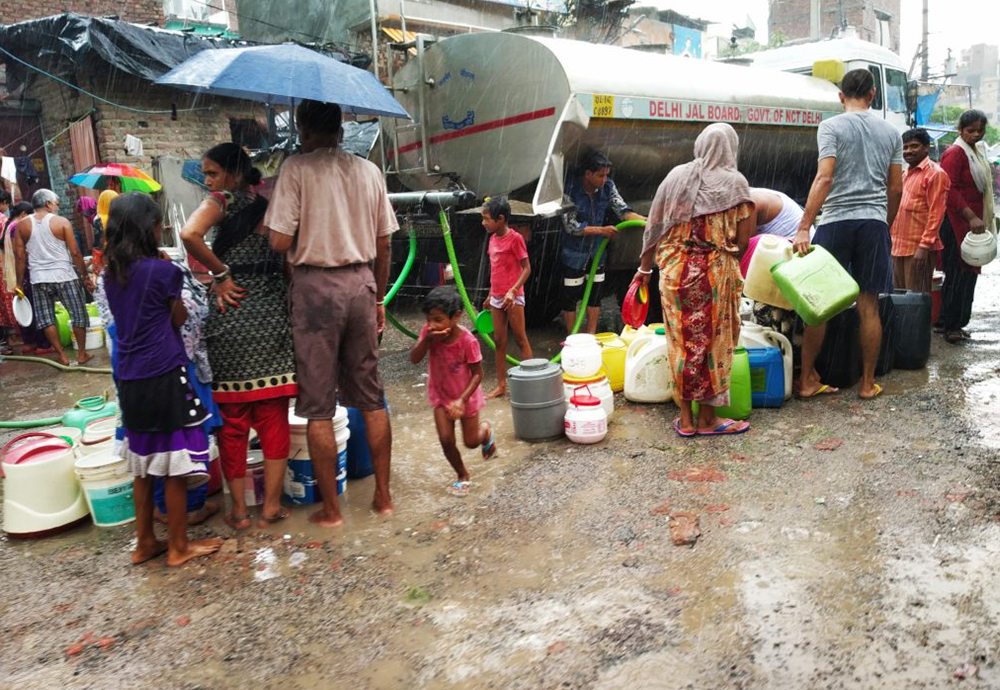
Savda Ghevra: A Story of Resettlement
This is the story of an adolescent girl.
Imagine a young girl who has just finished her 10th standard board exams and is looking forward to continuing her education. Only, one night, her house is bulldozed over, and the only place she has ever known as home is lost.
This is the story of many dwellers of the Savda Ghevra resettlement colony. Ghettoed around 40 kilometers outside Delhi, the Savda colony came into existence in 2006. ‘Came into existence’ is a phrase used very loosely here, as it was essentially an isolated jungle a decade ago, with no access to any sort of facilities.
Families were resettled from Lakshmi Nagar and the area around today’s Indira Gandhi International Airport. One of the casualties of this resettlement is a young woman community leader of Savda. After her house was demolished, her family was forced to find a place to rent nearby. Those affected by this ‘development’ were offered plots at Savda on lease for a duration of 10 years for Rs.7000. Now, this does not sound like a bad deal. But, let’s break it down.
This is the story of families fighting against urban poverty. Most of the people who lost their homes were working at the airport. Moving to Savda meant traveling over 30 kilometers one way every day, or looking for alternate employment closer to their new homes. Savda, in 2006, lacked access to water, electricity, and transportation infrastructure. Two buses plied from Savda; miss it, and you lose a day’s wage. The closest thing to a market was the Ghevra village nearby.
Unable to afford the rent of Rs.5000, the adolescent girl’s family was forced to construct a makeshift temporary house in Savda and move there. Her father, the sole breadwinner of the family, had not received his salary for months as the union in the factory that he worked at was protesting for higher wages. With no source of income, they had to make do with what they were given.
This is the story of children who were forced to drop out of school. For the first couple of years at Savda, families had no access to a school or health centre. While these are significant concerns, their immediate efforts were geared towards getting access to water and electricity. They were forced to relieve themselves in the fields nearby and bathe in the contaminated pond outside the settlement. One tanker would come and fill a tank with hard water, and the residents of Savda would fight for their share. Most nights were spent in darkness with old-school lamps being the primary source of light.
Mahila Housing Trust (MHT) came into the picture soon after the resettlement. They began to build a relationship with the community and delved deep into the concerns of the dwellers. Water became the chief focus; the first task of MHT was to provide motors so that residents could access groundwater for their daily use. This resolved a critical issue. Over time, Delhi Jal Board also started sending more tanks to Savda, significantly alleviating the water problem. Once access to water was no longer an issue, MHT concentrated on sanitation. In a span of two years, MHT has helped build over 1500 individual toilets by providing supplies and micro-finance to the residents. However, with over 5000 households in the colony, we still have a long way to go.
This is the story of a community empowered. While provision of water and sanitation facilities are concrete examples of MHT’s work in Savda, what has been most noteworthy is the way they have enabled the community, especially the women. Through training programmes and capacity building, MHT has educated women on their rights, and how they can demand them. By encouraging women to raise their voices and approach local government bodies, they have brought to the forefront the political salience of this group.
Having said this, the people at Savda still struggle for many basic things. Schools have been built, roads have been constructed, electricity has been provided, and the communities have become fairly self-sufficient. But, the drainage system is still rudimentary, with open drains causing huge health hazards. Even though tankers are now frequent, access to piped water would be ideal. The biggest challenge that the colony faces, however, is that the 10-year lease that they were given in 2006 has now expired, and the government has not yet renewed it. This is an ongoing fight, one that the residents hope will get resolved by them getting legal titles over the land where they have built their homes.
This is the story of a community in the National Capital.
This is the story of urban inequality in India.
